You searched for: poland
<< Previous | Displaying results 226-250 of 1568 for "poland" | Next >>
-
Lonia Goldman Fishman
ID CardLonia had three sisters and one brother. Her parents owned a cotton factory in the town of Wegrow. The Goldmans were a religious family, strictly observing the Sabbath, the Jewish holidays and the dietary laws. 1933-39: After studying all day at public school, Lonia attended a religious school for girls called Beis Yakov where she studied Hebrew, the Bible and Jewish history. Later, when she was in high school, a private tutor came to the house to teach her Hebrew. Lonia's favorite hobby was knitting.…
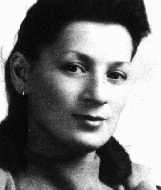
-
Welwel Rzondzinski
ID CardOne of six children, Welwel was born to Jewish parents living in the predominantly Jewish town of Kaluszyn, 35 miles east of Warsaw. His parents were religious, and they spoke Yiddish at home. Welwel's father was a bookkeeper for a large landowner. After Welwel's father died, his mother ran a newspaper kiosk in Kaluszyn. Welwel married when he was in his twenties and moved with his wife Henia to Warsaw. 1933-39: When war broke out three months ago, many Jews left Warsaw in a mass exodus towards the east.…
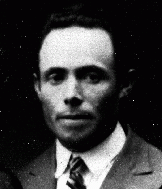
-
Ethel Stern
ID CardEthel was born to a Jewish family living in Warsaw. When she was 9, her family moved to the town of Mogielnica, about 40 miles southwest of Warsaw. Ethel's father spent much of his time studying religious texts. His wife managed the family liquor store. Ethel attended public school during the day and was tutored in religious studies in the evening. 1933-39: Ethel had always wanted to be a teacher. At age 14, after attending religious school in Lodz, she began to teach in the town of Kalisz, where her…
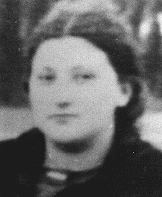
-
Emanuel Litwak
ID CardEmanuel, often known by his nickname Manek, was one of five children born to religious Jewish parents in the industrial city of Lvov. After graduating from secondary school, he entered Lvov's polytechnic institute to study civil engineering. 1933-39: At the institute the Jewish students had to stand on the left side of the lecture hall. Once, antisemitic schoolmates broke his jaw because he put up a fight when he was insulted. Manek sued his attackers, but the case was dismissed; the judge said Manek…
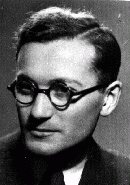
-
Welwel Wainkranc
ID CardThe third of five brothers, Welwel was born to Jewish parents who lived 35 miles east of Warsaw in the small predominantly Jewish town of Kaluszyn. His father was a cattle merchant who purchased cows and sold the meat to butchers in the Warsaw region. Welwel spent most of his free time with a group of Jewish friends who lived in his neighborhood and who attended the same public school. 1933-39: Every summer evening Welwel, Abram Kisielnicki, and some other pals, like to stroll along Kaluszyn's main…

-
Polish Jewish Refugees in Lithuania, 1939–40
ArticleLearn more about Polish Jewish refugees that relocated to Lithuania between 1939-1940.
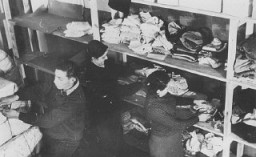
-
William Bein
PhotoWilliam Bein, director of the American Jewish Joint Distribution Committee (JDC) in Poland, with children at the Srodborow home for Jewish children, near Warsaw. The home was financed by the JDC. Srodborow, Poland, 1946.
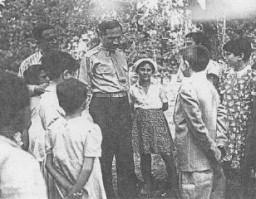
-
Moments of Despair
SongYiddish folk poet and songwriter Mordecai Gebirtig was born in Krakow, Poland, in 1877. "Moments of Despair" was written in Krakow in September 1940 on the first anniversary of the German invasion of Poland. The lyrics to this piece comment upon a year of persecution and the uncertainty of the future.
-

-
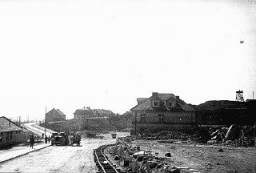
-
Deportation of Jews
PhotoScene during the deportation of Jews in occupied Poland. Place and date uncertain.
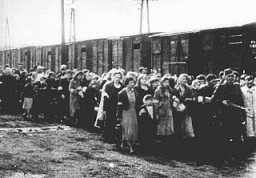
-
Expulsion of Poles
PhotoGerman soldiers expel Polish inhabitants from the Zamosc area. Poland, 1942-1943.

-
Bombing of Warsaw
Media EssayGerman troops invaded Poland in September 1939. The city of Warsaw suffered heavy air attacks and artillery shelling, causing massive destruction.
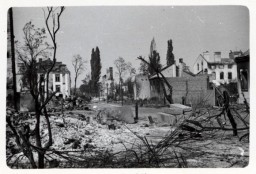
-
Płaszów camp commandant Amon Goeth
PhotoAmon Goeth, commandant of the Płaszów camp. Płaszów, Poland, between February 1943 and September 1944.
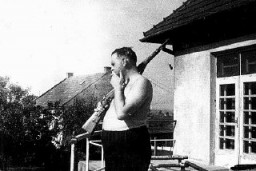
-
Death penalty decree
PhotoA Nazi decree issued in October 1941, in German and Polish, warns that Jews leaving the ghetto, or Poles who aid them, will be executed. Czestochowa, Poland.
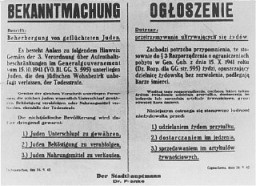
-
Deciding whether children are "Aryan"
PhotoGerman officers examine Polish children to determine whether they qualify as "Aryan." Poland, wartime.
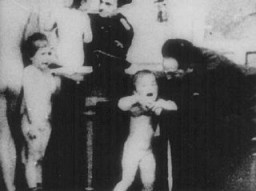
-
Polish babies chosen for their "Aryan" features
PhotoPolish babies, chosen for their "Aryan" features, to be adopted and raised as ethnic Germans. Poland, 1941–1943.

-
Lublin ghetto
PhotoResidents of the Lublin ghetto. Poland, 1941-1942. (Source record ID: E9 NW 33/IV)
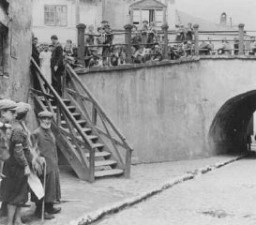
-
Aftermath of the Kielce pogrom
PhotoA woman mourns by the coffins of Jews who died in the Kielce pogrom. Poland, July 6, 1946.
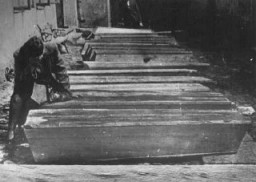
-
Crematoria and remains in the Majdanek camp
PhotoCharred remains of corpses near crematoria in the Majdanek camp, after liberation. Poland, after July 22, 1944.
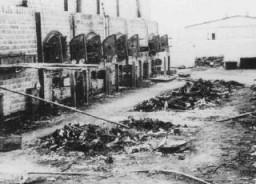
-
Barbed-wire surrounding the Plaszow camp
PhotoA section of barbed-wire fencing surrounding the Plaszow camp. Plaszow, Poland, 1943-44.

-
View of the Trawniki camp
PhotoView of the Trawniki training camp showing two barracks and a watch tower. Trawniki, Poland, between 1941 and 1944.

-
Crematorium at the Majdanek camp
PhotoA crematorium at the Majdanek camp, outside Lublin. The photograph was taken after the Soviet liberation of Lublin/Majdanek in July 1944. Poland, date of photograph uncertain.
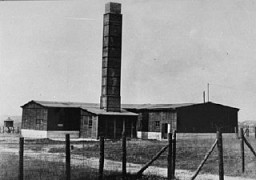
-
Entrance to the Warsaw ghetto
PhotoEntrance to the Warsaw ghetto. The sign states: "Epidemic Quarantine Area: Only Through Traffic is Permitted." Warsaw, Poland, February 1941.

-
Street scene in the Warsaw ghetto
PhotoStall of a street vendor selling old Hebrew books. Warsaw ghetto, Poland, February 1941.

